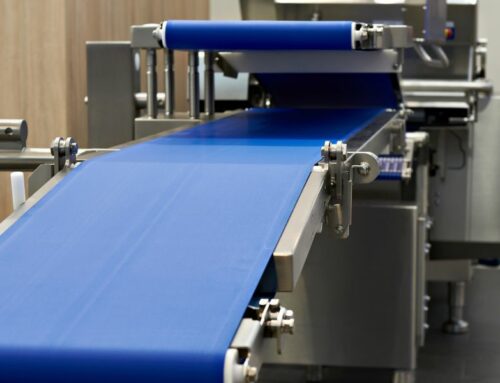
Assembling, packaging, transporting—conveyor systems seem to be capable of it all, which is why many varying industries utilize them. From pharmaceutical to industrial to grocery, you can find conveyor systems supporting a slew of operations. Conveyor companies have made conveyor systems even more applicable to specified tasks by creating different types of conveyors with structural differences. In this article, Redline Systems, Inc. looks at common uses of conveyors in different industries by breaking it down by conveyor types.
Cleated Belt Conveyors
Common uses of cleated conveyors in different industries include handling delicate items, providing space between products, and transporting abrasive, bulky products. The cleats, or barriers, on the belt prevent loose materials from falling, which could cause product damage and workplace injuries.
Many industries benefit from cleated belt conveyor applications. Agriculture, food handling, mining and excavations, warehousing—the list goes on. Clearly, cleated belt conveyors uphold conveyor belt reputation for being incredibly versatile.
Curved Belt Conveyors
Curved belt conveyors maximize space, which is especially advantageous to facilities with restricted space for equipment. You’ll find curved belt conveyors throughout many industries, particularly logistics and warehousing. A curved belt’s ability to redirect products up to 180 degrees helps logistic teams designate products to the correct incoming and outgoing destination.
Sanitary and Washdown Conveyors
Food and pharmaceutical companies commonly employ sanitary and washdown conveyors to comply with FDA standards and guidelines. These conveyors are ideal for harsh washing and necessary sterilization of both food and machinery.
Sanitary and washdown conveyors are special because they’re designed to withstand various sterilization procedures that may include harsh pressure, extreme temperatures, and sanitary chemicals, which each help create a product that’s safe for consumers.
Incline and Decline Conveyors
These types of conveyor systems allow employees to transport goods from one elevation to the next, whether it be above or below. It’s common for incline and decline belt conveyors to utilize a cleated belt as well to prevent products from falling.



